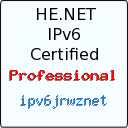My Technical Side
Because of my career, a large portion of what I do and learn is focused on
computers. My
home network and computer lab
has all sorts of interesting ongoing projects. When I have the chance, I'll
highlight them on this page.
For my domain, I run my own web/mail server. Over the course of time,
it's gotten to the point that I really hate SPAM (and I don't mean the
food)!!! For a while, my domain was deluged with the stuff. If you sysadmin
your own sendmail server like I do, you may be interested in my
anti-SPAM solution. I now only get one or
two spam messages a day.
Quite a while ago, as an experiment I connected my SGI Indy with its IndyCam
to my website.
Here are that project's details and results.
I prefer that my computers be somewhat reliable, especially my mail/web
server. Therefore, I've some UPSes (Uninterruptible Power Supplies) to help
when the power goes out. I've set up web access so that I can check to see
how things are going when it does. Unfortunately, of the two UPSes on the
LAN, only the one that services the backbone devices and web/mail server has
the ability to be monitored. To make sure all the computers shut down
properly, I've designed a very simple and easy-to-implement
UPS network notification system.
I learned a lot by helping to start and by later leading the
Syracuse Linux User Group. Some of the
presentations and other material that I've done for the group can also be
found in this
local cache.
I've been using the vi editor for almost as long as I've been using
computers. Of all the editors that I've used, I still like it best.
Although it has a steep initial learning curve (modal editing is unlike
everything all the other editors do), I think that it is definitely worth
the effort. To find out more about it, try this
link.
A uniquely-contrived embedded OpenBSD system acts as my LAN's internal DNS,
DHCP and NTP server. Based on ideas from work I did while at iContact, I
created a way to easily modify, install, and configure this custom, embedded
system. I've not yet found any similar ideas on the Internet anywhere, so
I'm posting the details
here.
I did some work to allow my iPod Touch's AirPrint to print to my
home network's printer. Afterwords, I did a presentation about it at a
Triangle Linux User Group meeting. Perhaps
you'd like to try doing the same? If so, a copy of the slides I used to
explain how I did it are
here.
I had previously set up an IPv6 Tunnel using Hurricane Electric's Tunnel
Broker service, using one of the Linux machines on my home LAN. More
recently, I switched from using an off-the-shelf Linksys WRT610n
wireless router that had unofficial and broken support for IPv6, to a
Mikrotik RB750G router that officially supported IPv6 tunnels. I
decided that the new router should be the machine routing IPv6 through
the tunnel, and these
pages tell how I did it.
